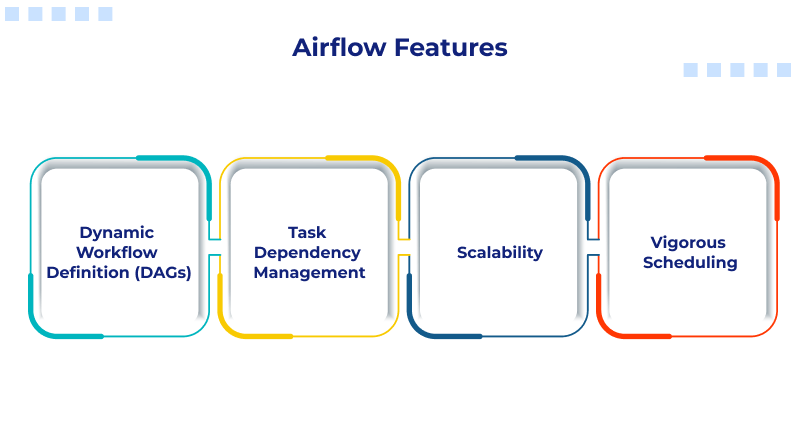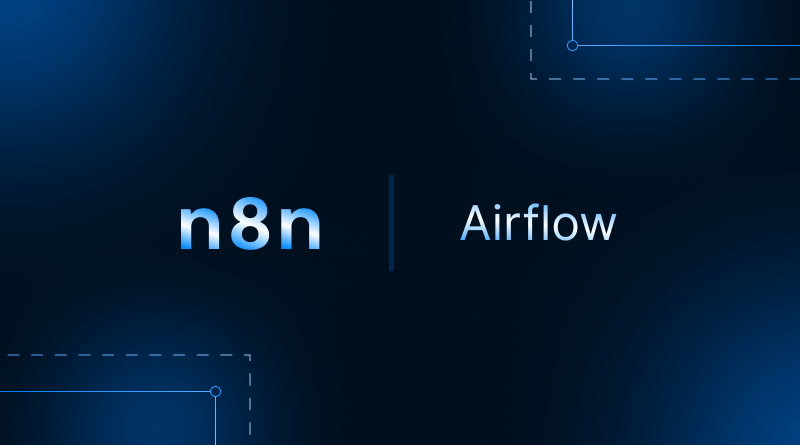Automation and orchestration have become integral pillars of modern IT operations. Both n8n and Apache Airflow are created to ease their corresponding processes. n8n is a low-code and user-friendly automation tool with many diverse applications and uses n8n VPS to meet web hosting needs. In contrast, Airflow is a scalable platform that is built to handle data engineers for creating advanced workflows.
When you are stuck choosing between n8n and Airflow, this guide assists in determining the key features, advantages, weaknesses, and where each one of them is suitable. Towards the end, you will have a clear understanding of which tool is a better fit for your business and project requirements.
Table Of Content
What is n8n?
N8n is a free workflow automation engine that can be used to connect various apps and services to automate repetitive work without writing any code. It has a visual, node-based workflow development experience and 400+ integrations.
N8n is designed for developers and potential users creating custom automations. It includes those involving AI agents, by providing complete control over data flow and allowing for custom JavaScript or Python logic.
n8n Features

- Open-Source Core: n8n is an open-source workflow automation offering more transparency and customization.
- Node-Based System: Workflows consist of dragging and dropping nodes, or steps of a process, such as obtaining data or sending a notification.
- Long-Term Integrations: n8n is known to integrate with popular apps, like Google Workspace, Slack, and CRMs, and also APIs.
- Visual Editor: It is a simple interface that allows users to construct more complex workflows with little or no coding knowledge.
- Self-Hosting Choice: n8n can be hosted on personal servers by the user and offers full control over their data and a self-serve choice.
What is Apache Airflow?
Apache Airflow is an open-source system that can be used to design, schedule, and monitor complex workflows or data pipelines. Python is used to define the coding pipelines as DAG by the users. The data structure used to represent the whole workflow is called Directed Acyclic (DAGs) data structure. Furthermore, on the website of Airflow, you can see, manage and track the progress of all your data pipelines.
Airflow Features

- Dynamic Workflow Definition (DAGs): Python is used to create workflows. It is referred to as DAGs, which enables programmatic, dynamic workflow generation, the inclusion of loops, and parameters to enable flexible and maintainable pipelines.
- Task Dependency Management: Airflow makes sure that all tasks are executed in the correct sequence so that data flow becomes smoother.
- Scalability: Airflow can be scaled to a distributed system with multiple executor support (e.g. Celery, Kubernetes) and has the potential to support a large variety of workloads without data integrity being impacted.
- Vigorous Scheduling: Airflow scheduler has a robust schedule that enables time-sensitive and event-driven execution of tasks, which ensure that the tasks are executed on time, and the missed Service Level Agreements (SLAs) are monitored.
Key Differences
| Feature | n8n | Apache Airflow |
| Methodology | Low-code/No-code, visual editor (nodes) | Code-first (DAGs in Python) |
| User Interface | Intuitive, graphical UI | Web-based UI for monitoring and management, but workflows are created in code |
| Core Audience | Business users, developers, marketers | Data engineers, data scientists, DevOps teams |
| Use Cases | App integrations, simple automations, business processes, event-driven workflows | Complex data pipelines, ETL/ELT, batch processing, MLOps |
| Flexibility | High, with custom JavaScript nodes | Extremely high, with custom Python operators and hooks |
| Learning Curve | Low | Steep |
| Maintenance | Generally easier to manage and update | Requires a solid understanding of a complex distributed system |
The decision of n8n vs Apache Airflow depends on the nature of the IT need, technical skills, and the complexity of the workflow. N8n can be the solution of beginners, and the low-code business automation platform is available. It has a huge number of built-in integrations that are perfect for automating routine tasks. N8n synchronises data between SaaS workflows and applications.
Apache Airflow is favorable among data engineers and the developer community since it includes an industrial-quality orchestration engine. It is the code-first framework that relies on Python Data Grafs, provides unsurpassed control, maintainability, and scalability to complex, mission critical data pipelines. In case of complex dependencies, large scale batch processing, machine learning processes, or strong error handling/monitoring, Airflow is the best option.
FAQs
1. Which tool is more suitable for large, enterprise-level operations?
Apache Airflow is developed to support large-scale data engineering and complicated data pipelines, which is why it is more appropriate for entrepreneurial tasks.
2.Which one is simpler to configure and operate n8n or Airflow?
n8n is much simpler to install and operate with, and it has a low-code, visual interface, compared to Airflow which has a steep learning curve and requires knowledge of Python.
3. What is more appropriate to use for general workflow automation and SaaS integrations?
n8n provides for more friendly interface and a wide range of pre-built integrations, which makes it better for general workflow automation and SaaS integrations.
4. Which is better composed of complicated, planned information processing and ETL tasks?
Apache Airflow is a more appropriate workflow orchestration platform as it is better suited in complex, scheduled data processing and ETL (Extract, Transform, Load) tasks.















